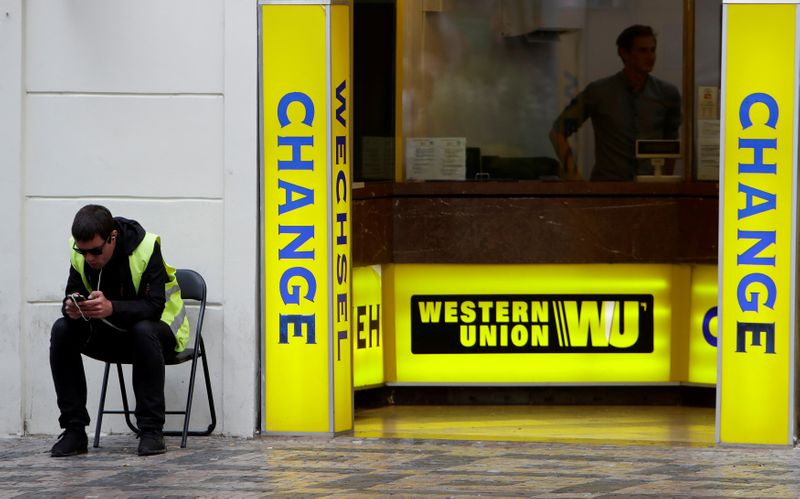This post was originally published on this site
https://i-invdn-com.akamaized.net/trkd-images/LYNXMPEGA21ME_L.jpg
LONDON (Reuters) – Western Union Co (N:WU), the world’s largest money transfer firm, expects an improved outlook for 2021 as people adjust to the novel coronavirus and on expectations for additional U.S. government stimulus to help the economy, its chief financial officer said on Tuesday.
Remittance flows, a vital source of external financing for developing countries, have tumbled this year as new migration has slowed and some existing migrant workers return to their home countries after losing jobs.
Western Union, which relies on such transfers for its business, last week reported third-quarter revenue of $1.3 billion compared to a Refinitiv IBES estimate of $1.25 billion and reinstated its 2020 full-year financial outlook with generally accepted accounting principles (GAAP) earnings per share in the range of $1.72-$1.77.
“Generally, I would expect a better 2021 than we saw this year,” Raj Agrawal told Reuters in a video interview. “At least here in the U.S., we should get some economic stimulus. The election will be behind us, all of these things will help the U.S., which is a big part of our business, and I do think people have learned to live a little bit more with the pandemic and we will see better times next year.”
The World Bank expects remittance flows to fall by 7% to $666 billion in 2020, before a further decline of 7.1% in 2021. The World Bank’s estimated contraction for 2020 was less severe than the almost 20% dip it had forecast in April.
While an easing of COVID-19-related lockdowns helped a recovery in Western Union’s retail business in the third quarter, the firm has also been boosted by faster-than-expected growth in its digital business, which includes money sent via the internet, mobile or its digital partners.
In the last two quarters, Western Union’s digital business had been growing in the 40%-50% range, said Agrawal, adding that digital revenues accounted for around 21% of its total consumer revenue, with the remaining 79% driven by retail.


